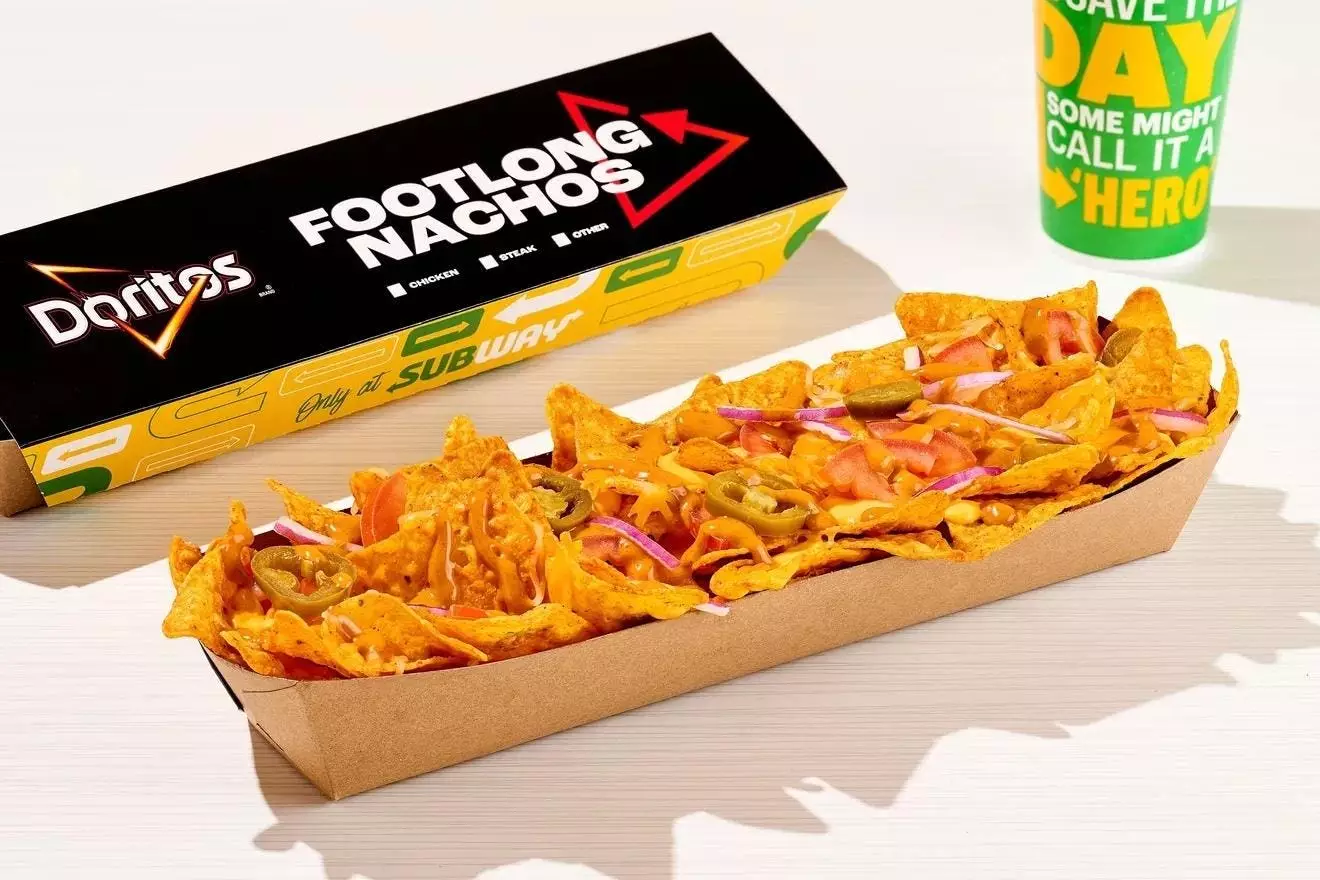Subway, a name long synonymous with $5 footlong sandwiches, is making waves with its latest addition—a rather unconventional item: footlong nachos. In partnership with Doritos, this 12-inch delight promises to capture the attention of snack enthusiasts and budget-conscious consumers alike. Set at an appealing price point of $5, these nachos are designed for sharing, customized to fit individual tastes, and aimed at redefining how we think about fast food. Rather than just another sandwich, Subway positions itself as a competitor in the ever-growing snacking sector.
The creation begins with a foundation of nacho cheese-flavored Doritos, layered majestically with gooey cheddar cheese, spicy jalapeños, fresh diced tomatoes, vibrant red onions, and a hint of chipotle sauce—a combination that checks all the boxes for what makes a snack appealing to modern palates. Further customization options, like the addition of rotisserie-style chicken or steak, showcase Subway’s adaptability within a market increasingly characterized by consumer demands for convenience and personalization.
The Snack Revolution: Understanding Changing Consumer Habits
The rise of snacking, particularly among younger generations, has reshaped dining experiences across America. With 74% of the population snacking daily and many substituting traditional meals with smaller bites, Subway’s move into the snack realm is hardly coincidental. As the data suggests, American consumers are increasingly leaning toward foods that are sweet, salty, and crunchy, with snacking no longer relegated to mere between-meal nibbling.
For Subway, it is an astute recognition of the market shift. With food consumption habits evolving rapidly, the footlong nachos represent a significant bid to capture this lucrative demographic that craves convenience—highlighting a blend of portability and affordability that today’s generation values. The ingenuity inherent in this launch speaks of a brand seeking not just to survive but thrive in a competitive industry.
Brand Evolution: A Necessity for Survival
Subway’s pivot to include footlong nachos is part of a larger strategy to revitalize its brand, which has faced challenges stemming from controversies and changing tastes. Once heralded for its fresh offerings, Subway has grappled with a tarnished reputation due in part to scandal and stagnant menu items. The introduction of non-sandwich products is a calculated risk; Subway aims to shake off the limitations that have boxed it in as merely a sandwich shop.
The menu diversification, which began with the expansion of the Sidekicks category, is indicative of a brand eager to take steps forward. The inclusion of footlong cookies, Cinnabon churros, and now nachos marks Subway’s attempt to break free from the shackles of its past identity. Contextually, this is more significant than just introducing a new product; it encapsulates a desperate need for reinvention amidst fierce competition from chains that continue to innovate.
Challenges Ahead: Can Non-Traditional Offerings Resonate?
However, Subway’s endeavors into uncharted territories bring inherent risks. The brand’s foray into non-sandwich offerings isn’t a guarantee for success, a truth illustrated by previous attempts at unconventional menu items, such as its short-lived pizza venture. There’s a palpable danger of alienating core customers who view Subway as a sandwich-centric brand; these loyalists may be perplexed or even disenchanted by the footlong nachos.
Furthermore, there lays the strategic challenge of ensuring that this new addition does not dilute the core identity that propelled Subway to global fame. As the fast-food landscape shifts relentlessly, the balance of innovation and brand integrity will be crucial. Subway’s ability to maintain a steadfast reputation while embracing transformation will dictate its success in this evolving market.
The Bigger Picture: Fast-Food Industry Dynamics
As industry giants continue to evolve, the news surrounding Subway serves as a reflective lens on the fast-food sector as a whole. Recent developments in the acquisitions of competitors like Jersey Mike’s illustrate the swath of movement within the industry, revealing a space ripe for opportunity. Subway’s audacity in introducing a novel food item amidst these competitive climate shifts spotlights different growth avenues available to established brands.
Consumer preferences may be evolving, but one thing remains true: the attention that comes with bold choices is invaluable in today’s talk-heavy digital age. Subway’s entry into the footlong nacho arena might just reignite conversations about its brand, survival strategy, and the on-the-go food landscape. In an environment where the art of snacking has become an essential part of the culinary fabric, Subway’s move signals a hopeful path filled with both opportunity and uncertainty.


Leave a Reply